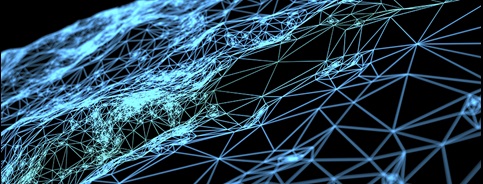Generation Elsewhere: Art in the Age of Distraction
Technology presents profound opportunities—and challenges—for the global cultural sector. While artists and administrators have more tools than ever to create, distribute, and market their content, they also face a tidal wave of digital surrogates for that content.

"Generation Elsewhere: Art in the Age of Distraction" was conceived by DeVos Institute President Brett Egan to investigate the impact of 21st-century technologies on artists, arts institutions, and arts audiences. The initiative is advised and co-curated by Tod Machover, composer, inventor, professor and head of the Opera of the Future group at the MIT Media Lab, and Sydney Skybetter, choreographer and Professor of Theatre Arts and Performance Studies at Brown University.
Four debates framed the discussion, featuring thought leaders from the fields of culture, science, technology, and policy.
The series is made possible with the support of the University of Maryland.
Technology, the Brain, and Audience Expectation: Vying for Attention in "Generation Elsewhere"
October 17, 2016
The Phillips Collection (Washington, D.C.)
As new technologies have dramatically altered 9-to-5 modes of communication, work, and leisure, have they also changed—consciously or unconsciously—what today’s audiences expect from their encounters with art? How will the cultural sector’s ability to develop and market its content compete in an era of cognitive and behavioral change accelerated by new technologies? This debate explores how the contemporary brain is changing as a result of its encounter with new technologies, and how this change must be addressed—even manipulated by—administrators and artists.
Virtual Realities and the Public Sphere: The Future of Cultural Architecture
October 27, 2016
Granoff Center for the Creative Arts, Brown University (Providence, Rhode Island)
What impact will an infinite supply of low-cost, high-quality, on-demand digital surrogates—available without leaving home—have on today’s cultural institutions, which largely require audiences to gather at a specific time, in a specific place, behave in a specific way, and pay handsomely to do it? Will tomorrow’s audiences—“digital natives”, “kidnapped” by technology from an early age – view their homes, replete with increasingly sophisticated technology, as a legitimate surrogate for the public sphere (the museum, the opera house, the theater, or the community center)? Contrarily, what types of cultural institutions, and cultural content, will compete with most success in this environment? What type of experience must tomorrow’s museums and concert halls facilitate to augment the value of the “real"?
The Emerging Means of Production: Anticipating the Next Digital Divide
November 15, 2016
Ford Foundation (New York, New York)
As more high-quality, monetizable cultural content moves online and onto virtual reality headsets, will the American cultural sector face a new front in the “digital divide”? Will larger organizations, which can afford to acquire and monetize tomorrow’s means of production, capture market share before those without the same means even enter the market? What impact will this have on the curation of content—whose stories are told, to whom, and with what frequency? What pressure will this place on smaller institutions? Alternatively, how might those same institutions flourish in this environment? This debate will investigate the potential gap between institutions with access to tomorrow’s means of production and distribution and those without—and the economic and representational complications that may result.
The Artist: Means, Meaning, and Impact in the 21st Century
December 9, 2016
MIT Media Lab, Massachusetts Institute of Technology (Cambridge, Massachusetts)
What new stories can be told—and new experiences created—that are maximally synergistic and complementary with evolving tools and techniques? How will artists map their work on to the changing contemporary brain? Can artistic practice somehow evade—or perhaps benefit from—the changes affecting audiences in virtually every other aspect of their lives? What must managers and theater architects know about artistic practice in the digital age in order to ready their institutions for new modes of creation and distribution? How can technology enhance and extend—rather than inhibit or replace—human potential for expression, connection, and collaboration?